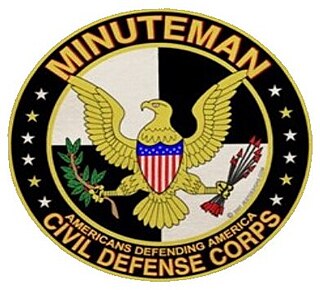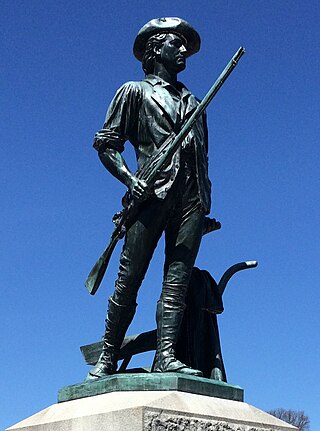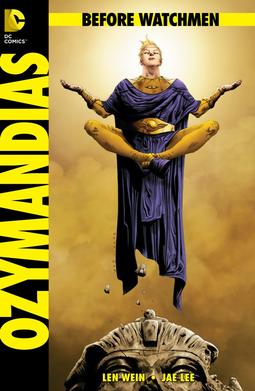
The Comedian is a fictional character who debuted in the graphic novel limited series Watchmen, published by DC Comics. The Comedian was created by writer Alan Moore with artist Dave Gibbons. As with most of the main characters in the series, he was an analogue for a Charlton Comics character, in this case the Peacemaker. Moore imagined the Comedian as a mix between the Peacemaker with "a little bit of Nick Fury" and "probably a bit of the standard Captain America patriotic hero-type".
Silk Spectre is the name of two fictional superheroines in the graphic novel limited series Watchmen, published by DC Comics. Created by Alan Moore and Dave Gibbons, the original Silk Spectre, Sally "Jupiter" Juspeczyk, was a member of the crimefighting team the Minutemen, while the second, Sally's daughter Laurel "Laurie" Jane Juspeczyk, became a member of the vigilante team Crimebusters, also known as the titular Watchmen.

100 Bullets is an American comic book published by DC Comics under its Vertigo imprint. Written by Brian Azzarello and illustrated by Eduardo Risso, the comic book ran for 100 issues and won the Eisner Award and Harvey Award.

Eduardo Risso is an Argentine comics artist. In the United States he is best known for his work with writer Brian Azzarello on the Vertigo title 100 Bullets, while in Argentina and Europe he is noted for his collaborations with Ricardo Barreiro and Carlos Trillo. He has received much acclaim for his work.
The Middlesex County Volunteers (MCV) is a 501(C)(3) not-for-profit fife and drum corps that plays music from the 17th, 18th, 19th and 20th centuries. Founded in 1982 at the end of the United States Bicentennial celebration, the group is composed of musicians and Color Guard, sixteen years and older.
The Minuteman Project is an organization which was founded in the United States in August 2004 by a group of private individuals who sought to extrajudicially monitor the United States–Mexico border's flow of illegal immigrants. Founded by Jim Gilchrist and Chris Simcox, the organization's name is derived from the name of the Minutemen, militiamen who fought in the American Revolution. The Minuteman Project describes itself as "a citizens' Neighborhood Watch on our border", and it has attracted the attention of the media due to its focus on the issue of illegal immigration.

Captain John Parker was an American farmer and military officer who commanded the minutemen who fought at the Battle of Lexington on April 19, 1775.

Minute Man National Historical Park commemorates the opening battle in the American Revolutionary War. It also includes the Wayside, home in turn to three noted American authors. The National Historical Park is under the jurisdiction of the National Park Service and protects 970 acres (392.5 ha) in and around the Massachusetts towns of Lexington, Lincoln, and Concord.

The Minuteman Civil Defense Corps was a volunteer group at one time headed by Chris Simcox and dedicated to preventing illegal crossings of the United States border with Mexico. Arguing that the government was insufficiently concerned with securing the border, they organized several state chapters, with the intention of providing law enforcement agencies with evidence of immigration law violations. The group was one of several that emerged for the proliferation of civilian border patrol groups at the US-Mexico border. Arguably, the emergence of these groups can be linked to the increasing criminalization and securitization of immigration. Simcox stated that the group merely reported incidents to law enforcement, and did not directly confront immigrants. There was a standard operating procedure (SOP) that was to be followed by Minutemen volunteers, with rules including not speaking to, approaching, gesturing towards or having physical contact in any way with any suspected border crossers. According to Anthony Ramirez of the New York Times, the organization "has been criticized as being a right-wing militia".

The Battles of Lexington and Concord was the first major military campaign of the American Revolutionary War, resulting in an American victory and outpouring of militia support for the anti-British cause. The battles were fought on April 19, 1775, in Middlesex County, Province of Massachusetts Bay, within the towns of Lexington, Concord, Lincoln, Menotomy, and Cambridge. They marked the outbreak of armed conflict between the Kingdom of Great Britain and Patriot militias from America's thirteen colonies.

Watchmen is a 2009 American superhero film based on the 1986–1987 DC Comics limited series of the same name co-created and illustrated by Dave Gibbons. Directed by Zack Snyder from a screenplay by David Hayter and Alex Tse, the film features Malin Åkerman, Billy Crudup, Matthew Goode, Carla Gugino, Jackie Earle Haley, Jeffrey Dean Morgan, and Patrick Wilson. A dark and dystopian deconstruction of the superhero genre, the film is set in an alternate history in the year 1985 at the height of the Cold War, as a group of mostly retired American superheroes investigate the murder of one of their own before uncovering an elaborate and deadly conspiracy with which they are all connected.

John Higgins is an English comic book artist and writer. He did significant work for 2000 AD, and he has frequently worked with writer Alan Moore, most notably as colourist for Watchmen.

Isaac Davis was a gunsmith and a militia officer who commanded a company of Minutemen from Acton, Massachusetts, during the first battle of the American Revolutionary War. In the months leading up to the Revolution, Davis set unusually high standards for his company in terms of equipment, training, and preparedness. His company was selected to lead the advance on the British Regulars during the Battle of Concord because his men were entirely outfitted with bayonets. During the American advance on the British at the Old North Bridge, Davis was among the first killed and was the first American officer to die in the Revolution.

The Col. James Barrett Farm is a historic American Revolutionary War site in Concord, Massachusetts, associated with the revolution's first battle, the 1775 battles of Lexington and Concord. His farm was the storage site of all the town of Concord's militia gunpowder, weapons and two pairs of prized bronze cannons.

Minutemen were members of the organized New England colonial militia companies trained in weaponry, tactics, and military strategies during the American Revolutionary War. They were known for being ready at a minute's notice, hence the name. Minutemen provided a highly mobile, rapidly deployed force that enabled the colonies to respond immediately to military threats. They were an evolution from the prior colonial rapid-response units.

The Minutemen was a secessionist paramilitary organization in St. Louis, Missouri in the early months of 1861. Many members joined the 2nd Regiment of the Missouri Volunteer Militia, and after May 10, 1861 the Missouri State Guard or the Confederate States Army.
Capt. John Trull (1738–1797) was the commander of the Tewksbury, Massachusetts minuteman company on the first day of the American Revolution, at the Battle of Lexington & Concord.

Before Watchmen is a series of comic books published by DC Comics in 2012. Acting as a prequel to the 1986 12-issue Watchmen limited series by writer Alan Moore and artist Dave Gibbons, the project consists of eight limited series and one one-shot for a total of 37 issues.

The Lexington–Concord Sesquicentennial half dollar, sometimes the Lexington–Concord half dollar or Patriot half dollar, is a commemorative fifty-cent piece struck by the United States Bureau of the Mint in 1925 in honor of the 150th anniversary of the Battles of Lexington and Concord, which began the American Revolutionary War. It was designed by Chester Beach and features Daniel Chester French's 1874 The Minute Man statue on the obverse.

The Minute Man is an 1874 sculpture by Daniel Chester French in Minute Man National Historical Park, Concord, Massachusetts. It was created between 1871 and 1874 after extensive research, and was originally intended to be made of stone. The medium was switched to bronze and it was cast from ten Civil War-era cannons appropriated by Congress.














